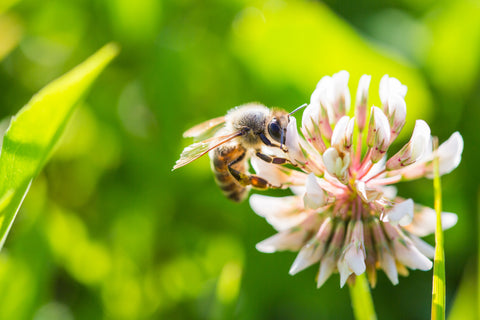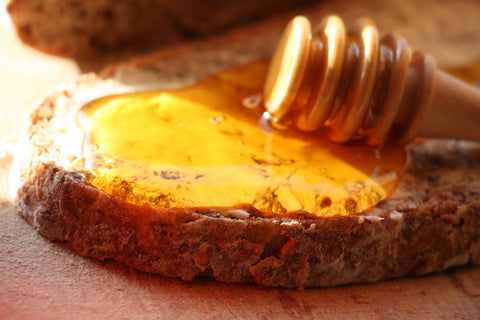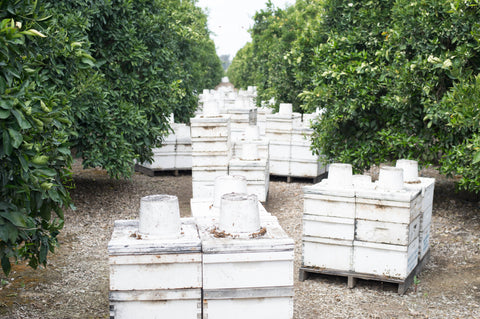More and more gardeners are getting excited to plant a bee garden this year. Many natural sources of flower-rich habitats are diminishing more and more over time. By planting a bee garden, you too can do your part to help the bees! In return, the bees will pollinate your flowers, providing a bountiful harvest of fruits, seeds and vegetables as well as the joy of watching them up close and knowing that you are doing your part.
You don’t even need a large plot of land to do it, all you need is a small plot of land, it can even be a window container or rooftop—to create an inviting oasis for bees. Every little bit can help to nurture bees and other pollinators.
If you’re like me you already know that variety is the spice of life and bees feel the same way! Bee gardens that use 10 or more species of bee-preferred plants tend to be the most successful. Using a wide variety of preferred plants in your bee garden will also attract a wide variety of bees. This is especially true when you choose to use a nice assortment of plants native to your area. Native plants will attract a nice variety of native bees. Certain bees require the native plants of their area to survive. Shop for your bee garden plants at a reputable nursery with knowledgeable staff who can assist you.
Bee season goes from March through October. Choose a selection of plants that will bloom successively during this time period. A continuous provision of nectar and pollen will be available to bees if one type of bloom becomes available as another is dying out.
Avoid using herbicides or pesticides in the bee garden. They not only can be toxic to bees but also are best not introduced to children or adults that visit your garden. Ladybugs, spiders, and praying mantises will naturally keep pest populations in check.
Bees need a place to get fresh, clean water. Fill a shallow container of water with pebbles or twigs for the bees to land on while drinking. Make sure to maintain the container full of fresh water to ensure that they know they can return to the same spot every day in your bee garden.
Flowers should be planted in large patches of like varieties to allow bees to dine in one spot for long periods of time. If your garden become too scattered about they will receive less visits from bees because the bees expend too much energy flying between each location.
Did you know that bees do not have the capability to see red? Therefore, bees will rarely visit flowers in variations of this primary color such as pinks and oranges. Though there are a few flowers in these color variations, such as bee balm, that attract bees by reflecting ultraviolet light.
Bees require two types of plants to survive: pollen plants and nectar plants. Pollen from plants is taken back to their nests to feed the young bees. Nectar plants feed the adult bees to give them energy while looking for pollen. Some of the nectar is also added to the nests to feed the baby bees.
Below is a short list of bee-preferred plants based on blooming season. Some of these plants will provide bees with just nectar or just pollen, while others will provide both. Speak to specialists at your local nursery for additional suggestions for your bee garden based on your location.
Spring
|
Nectar plants |
Pollen plants |
Combination |
|
Barberry |
Bush Anemone |
Bidens |
|
Blue Pea |
California Poppy |
Blanket Flower |
|
Borage |
Yarrow |
Blazing Star |
|
Chinese Houses |
|
Daisy |
|
Horehound |
|
Marigold |
|
Lavender |
|
Tansy |
|
Sage |
|
|
|
Salvia |
|
|
|
Scented Geranium |
|
|
|
Wisteria |
|
|
Summer
|
Nectar plants |
Pollen plants |
Combination |
|
Basil |
Borage |
Black-eyed Susan |
|
Catnip |
California Poppy |
Blanket Flower |
|
Lavender |
Chaparral Nightshade |
Bluebeard |
|
Lamb’s Ear |
Tomato |
Cosmos |
|
Mint |
Yarrow |
Dusty Miller |
|
Oregano |
|
Goldenrod |
|
Rosemary |
|
Purple Coneflower |
|
Sea Holly |
|
Pumpkin |
|
Spearmint |
|
Squash |
|
Thyme |
|
Zucchini |
Sunflowers are excellent bee plants that bloom throughout the season. However, Sunflower come in two types: with and without pollen. You’ll want to make sure that you choose the varieties with pollen as they will attract more bees to your bee garden.




